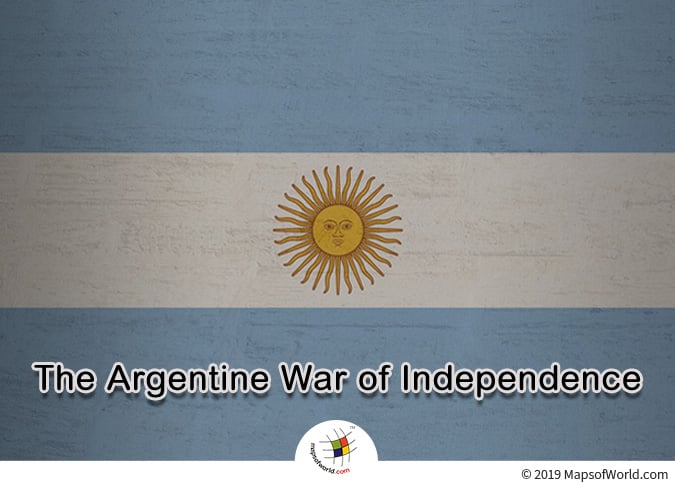

The Spanish first landed in Argentina in the 16th-century
The Argentine War of Independence was a freedom struggle undertaken by the patriotic groups of Argentina. The forces fought under the leadership of Manuel Belgrano, Juan José Castelli and José de San Martín against the Spanish crown. The war for independence lasted between 1810 and 1818. On July 9, 1816, Argentina declared its independence from Spain. This is the day that Argentina continues to celebrate as its Independence Day. The war, however, went on till 1818.
The Spanish first landed in Argentina in the 16th-century. The Spanish colony of Buenos Aires was established in 1580. At the time, most of Argentina was populated by indigenous groups who followed different cultures. Some regions were also part of the Inca Empire. The Spanish crown incorporated most of its South American colonies into the Viceroyalty of New Spain (established in 1521) and the Viceroyalty of Peru (established in 1534). Most of Argentina was included in the Viceroyalty of Peru. By the 18th-century, this was further split into the Viceroyalty of New Granada and the Viceroyalty of Río de la Plata. Most of the present-day Argentina was included in the latter, which had its capital in Buenos Aires.
The Spanish administration of the viceroyalties caused much discontent among the locals. The more important positions were all held by the peninsulares or the Spaniards and the Latin Americans or the Criollos found themselves without much representation or power. Theoretically, both were Spanish subjects and there was to be no distinction. In practice, their conditions varied vastly. This discontent was fanned by the advent of the Age of Enlightenment, and by the ideals championed by the American and French Revolutions.
In 1806, a British fleet invaded the Río de la Plata Viceroyalty and Buenos Aires fell to the attack. The Spanish Viceroy Rafael de Sobremonte fled to avoid capture. Santiago de Liniers, an officer of the Spanish military who later replaced the Viceroy, freed Buenos Aires with some local forces and Criollos from Montevideo. The following year, the British attacked again, but were stopped by the local militia. This victory greatly emboldened the Criollos. In 1808, Napoleon Bonaparte, the French Emperor, attacked Spain and forced King Ferdinand VII to abdicate. A Spanish rebellion broke out against Liniers who was French by nationality. This rebellion was, however, effectively put down by the Criollo militias led by Cornelio Saavedra. This empowered the Criollos and they realized that they could take on the Spanish forces.
Napoleon’s invasion also split the country into two halves. On one side was the administration backed by the French forces. On the other was the patriotic juntas who sought the restoration of the old order. Eventually Liniers was replaced. But the strain between the Criollos and Peninsulares continued to rise. The French took over most of Spain and the powerful Juna of Seville was dissolved. This news sparked the May Revolution between May 18 and 25, 1810, in Buenos Aires. This was a series of revolutionary events that eventually led the Criollo leaders to form a Junta. Its goal was to administer the Viceroyalty in the name of the deposed Spanish king. On May 25, 1810, the first independent government of Argentina, the Primera Junta took charge. This was the start of a long armed conflict between the Argentine militias (loyal to the Spanish crown) and the French-backed forces.
It took another 6 years of armed struggle for the Congress of Tucumán to declare the United Provinces of the Río de la Plata independent of Spain (July 9, 1816). The struggle, however, lasted till 1818, and the Argentine Constitution was formally adopted in 1853.
The Republic of Madagascar is an island country located in the Indian Ocean, off the…
The Euro is the official currency of the European Union. It is, however, not incumbent…
There are many countries or regions that are partially recognized by the UN, have disputes…
The Alaska Statehood Act was signed into law by President Dwight D. Eisenhower in 1958,…
The name Persia may, however, only be used to refer to Iran in some contexts.…
Hawaii is an Island State in the US. It is one of the 50 states…